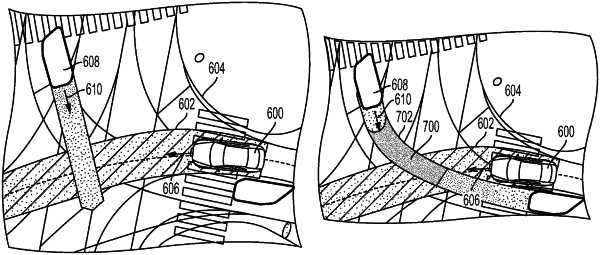| CPC B60W 60/00274 (2020.02) [B60W 30/09 (2013.01); B60W 30/0956 (2013.01); B60W 40/04 (2013.01); B60W 60/0011 (2020.02); B60W 60/0015 (2020.02); G06V 20/58 (2022.01); B60W 2554/806 (2020.02); B60W 2556/40 (2020.02)] | 17 Claims |

|
1. A method for operating a first vehicle, comprising:
generating, by a computing device, a vehicle trajectory for a first vehicle while the first vehicle is in motion;
detecting an object within a given distance from the first vehicle;
generating, by the computing device, at least one possible object trajectory for the object which was detected;
performing, by the computing device, a collision check to determine whether a collision between the first vehicle and the object can be avoided based on the vehicle trajectory and the at least one possible object trajectory;
performing, by the computing device, a plausibility check to determine whether the collision is plausible based on content of a map, when a determination is made in the collision check that a collision between the first vehicle and the object cannot be avoided; and
performing operations, by the computing device, to selectively modify operations of the first vehicle based on results of the plausibility check;
wherein the object comprises a second vehicle with an associated individual and the plausibility check comprises (i) generating a degree of plausibility of at least one plausible path of travel for the object and (ii) using a result from comparing the degree of plausibility to a threshold value for validating that it is plausible the associated individual could drive the second vehicle such that the second vehicle travels along a course leading to a collision; and
wherein the degree of plausibility is generated based on historical data relating to previous operation of the second vehicle by the associated individual.
|